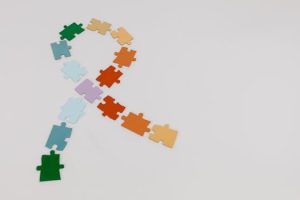Unpacking the Bail System and Calls for Reform
The bail system has long been a controversial topic in the criminal justice system. While it was initially designed to ensure the appearance of the accused in court, it has often been criticized for disproportionately impacting low-income individuals and perpetuating systemic inequalities. As calls for criminal justice reform continue to gain momentum, the need to unpack and address the flaws in the bail system has become increasingly urgent. In this article, we will delve into the intricacies of the bail system, explore its shortcomings, and discuss the ongoing efforts for reform.
The Basics of the Bail System
Before delving into the issues surrounding the bail system, it is important to first understand how it operates. When an individual is arrested for a crime, they are taken to court for an arraignment, where they are informed of the charges against them. At this point, the judge has the discretion to set the amount of bail, which is a sum of money the defendant must pay in order to be released from jail until their court date. If the individual can pay the full amount, they are released and their bail money is returned to them at the conclusion of their case. However, if the defendant cannot afford the bail amount, they have to remain in jail until their trial or plead guilty to the charges.
The Flaws in the System
Disproportionate Impact on Low-Income Individuals
One of the main criticisms of the bail system is its disproportionate impact on low-income individuals. The bail amount is often set too high for many to afford, which means they have to remain in jail even though they have not been convicted of a crime. This leads to a situation where individuals who are presumed innocent are punished simply because they cannot afford to pay their way out of jail.
In fact, studies have shown that a majority of individuals in jail are there simply because they cannot afford bail. According to the Prison Policy Initiative, nearly half a million people are currently in jail awaiting trial, and 90% of them remain behind bars because they cannot afford bail.
Perpetuating Systemic Inequalities
The bail system has also been criticized for perpetuating systemic inequalities. The bail amount is usually determined by the severity of the crime and the defendant’s criminal history, but it also takes into account their financial status. This means that individuals from marginalized communities, who are more likely to have low incomes, are disproportionately impacted and face higher bail amounts for the same crimes committed by a more affluent individual.
Furthermore, the bail system also has a racial bias. Due to systemic racial inequalities, people of color are more likely to be from low-income communities and thus, are disproportionately impacted by bail amounts. According to the Vera Institute of Justice, black and Latino men pay 35% and 19% higher bail amounts, respectively, compared to white men for similar charges.
Calls for Reform
Pretrial Risk Assessment
One of the most proposed solutions for addressing the issues surrounding the bail system is the implementation of a pretrial risk assessment. This would involve using a tool to determine the likelihood of a defendant appearing in court and the threat they pose to public safety. By taking these factors into account, judges can make more informed decisions about bail amounts rather than solely basing it on financial status.
Cash Bail Alternatives
Another solution being explored is the use of cash bail alternatives, such as supervised release programs or pretrial services. These would provide defendants with the support they need to stay out of jail while awaiting their trial. This could include services such as counseling, drug treatment, or job training, which would help individuals address the root causes of their criminal behavior rather than being incarcerated.
Criminal Justice Reform
Ultimately, the flaws in the bail system are just a symptom of a larger issue in the criminal justice system. Many advocates for reform argue that addressing systemic inequalities and implementing comprehensive criminal justice reform are necessary steps for fixing the bail system. This includes reducing reliance on money bail and implementing policies that prioritize public safety and fairness.
In Conclusion
The bail system continues to be a contentious topic and a significant barrier to achieving a fair and equal criminal justice system. The flaws in the system disproportionately impact low-income individuals and perpetuate systemic inequalities, making it a pressing issue in the ongoing efforts for criminal justice reform. While there is still much work to be done, the growing calls for change give hope that meaningful reform is on the horizon.










